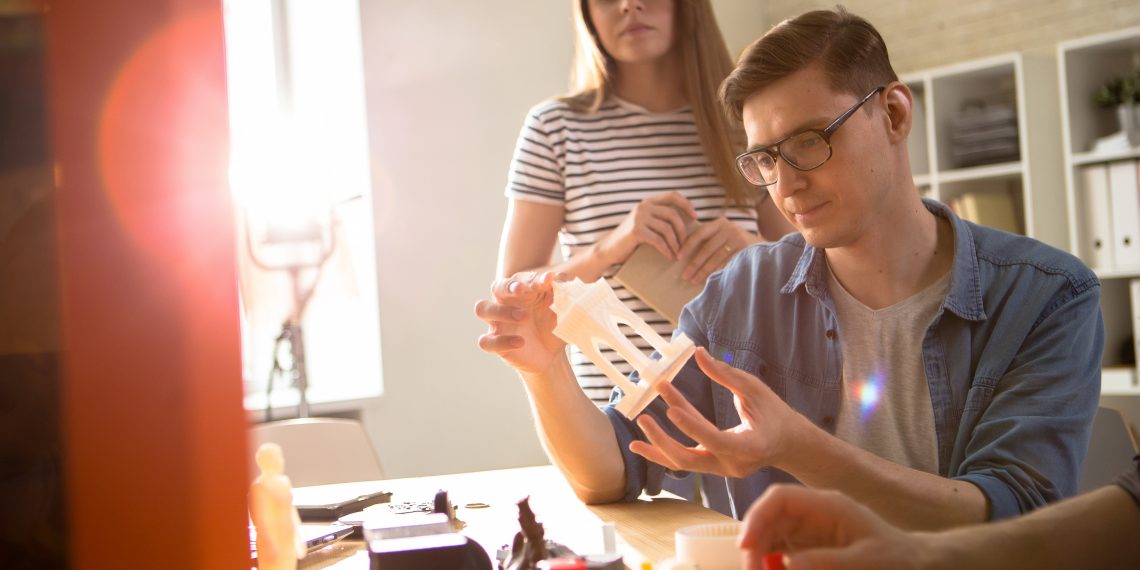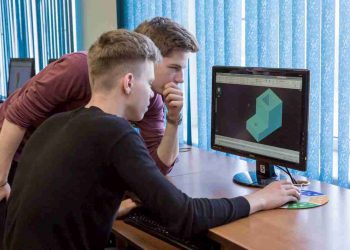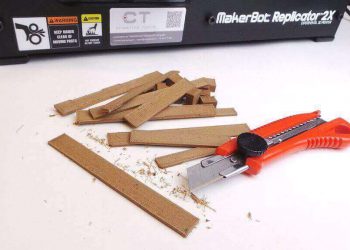3D printing support structures, as the name would imply, are elements of a 3D printed model that add support underneath long protruding areas. Without necessary support structures, these protruding or free-standing elements would be prone to warping, drooping, stringing, inaccurate printing and even total collapse during the print process.
These elements, to speak in very broad terms, are of two types:
1) Overhangs: parts of the 3D design that protrude outward from the rest of the build.
2) Bridges: horizontally suspended lines or series of lines connecting two points on the 3D printed object.
Removal of support structures after 3D printing
Support structures can be “Breakaway” support structures, or they can be “soluble” support structures. The removal process differs depending upon whether the support structure is a Breakaway type structure or made from a soluble filament.
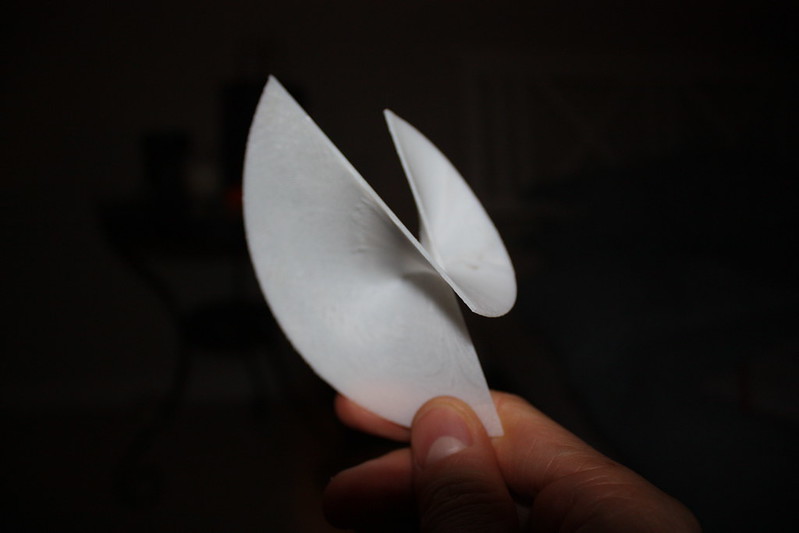
Breakaway support structures
These structures can be made from the same material as the rest of the build. In our particular instance, PLA, or from a material of similar strength that does not adhere too profusely to the main material. Such a mix of materials is possible only when using a double (or higher) extrusion 3D printer. PETG is a good choice for a double-extrusion based Breakaway support material with PLA.
Soluble support structures
Soluble structuresare made from special filaments that can be dissolved in a chemical bath post-printing, to leave the main build perfectly intact. For PLA, both PVA (Polyvinyl Alcohol) and Hydrofill can be used as soluble support structures. HIPS (High impact polystyrene) can be used, however its higher printing temperature as compared to PLA, makes it a very difficult material to use with PLA.
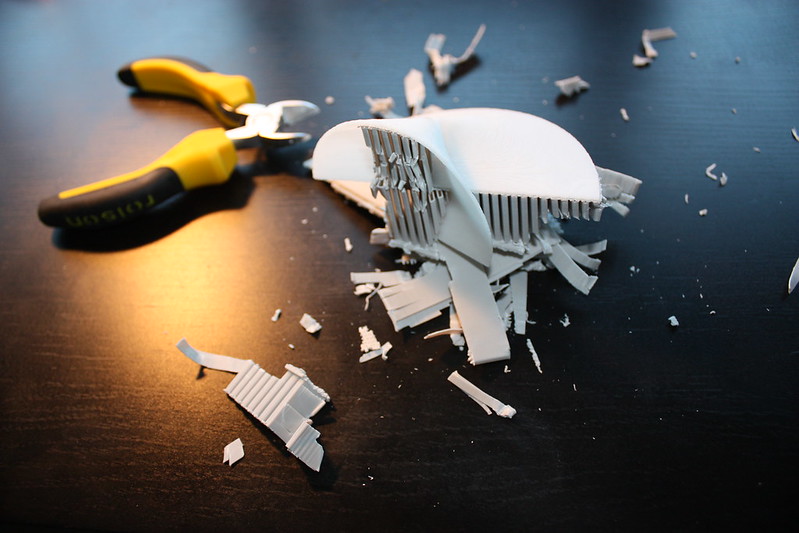
Removal of breakaway support structures
Breakaway support structures are 3D printed to have lower density than the main build by having a lower in-fill percentage as well as having thinner perimeters and/or walls. As such, they can be easily removed from the 3D print by either carefully pulling them off by hand, or for harder-to-remove supports, by use of needle-nose pliers and dental picks or tweezers. See our post on, every 3D printing tool you will ever need – from beginner to pro.
Care should be taken not to remove or cut the support structures too close to the main build. Instead it is okay to leave some of the support material on the 3D printed object at this stage.
If, despite care, some gaps or holes have become apparent in the main build of the 3D print, these can be filled various techniques. For small holes, clear nail polish topcoat/varnish works best with PLA. Alternatively epoxy resin can also be used. If the holes are larger, then it is best to use a good auto-body filler for plastics like JB weld plasticweld. Something like all-purpose Bondo putty will also work.
Once all the support structure has been removed by hand and/or pliers. The remaining parts of the support structure sticking out of the 3D print should be sanded away.
Sanding
PLA 3D prints are remarkably easy to sand for getting a smooth surface. Ideally, any protruding edges or lengths should be sanded away by using a coarse sand-paper (grit size between 100 to 400). Wet sanding will provide for a smoother and shinier exterior.
To correctly wet sand a PLA 3D print, it is recommended to wash the 3D print with a toothbrush and soapy water in between changing grit sizes to avoid caking of sanded PLA material on top of the print.
Care should be taken to not over-sand the 3D print, as this may cause damage to the main build. If such damage occurs, it should be filled and then sanded carefully to a smooth finish. Shell perimeters less than 2 on the main build are more prone to damage by sanding.
Once the 3D object has more or less attained the desired shape, a fine sandpaper (grit size 1000-2000) should be used for the final finish.
Sanding should always be done in small circular motions, and if possible, a handheld rotary machine is preferable – both for ease of use, as well as for more consistent sanding.
After sanding, the 3D object can be provided an optional desired finishing by polishing, painting, or varnishing.
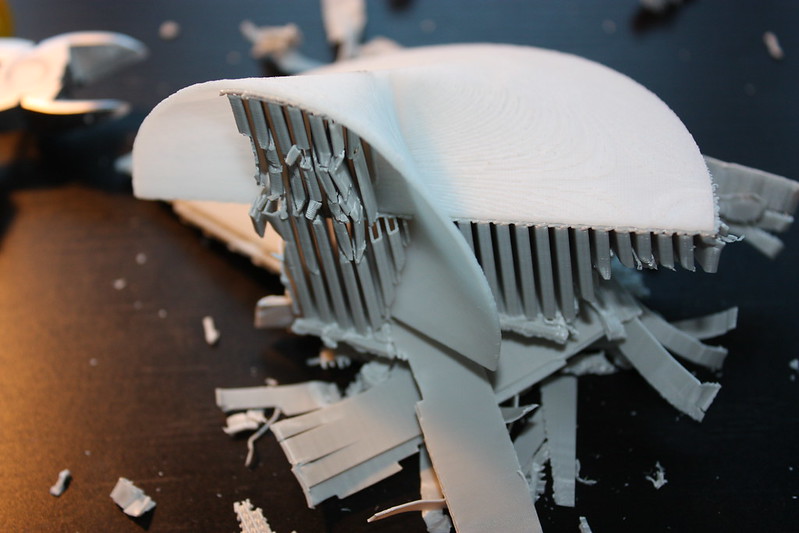
Removal of soluble support structures
In some cases, the required support structure becomes so complex that removing the support manually would be next to impossible, or at the very least, very impractical and time-consuming.
This is where soluble support structures come in. Soluble support structures can only be used with double extrusion 3D printer models as they are printed with special materials designed to be dissolved away to leave the main print intact.
For PLA, both PVA and Hydrofill can be used. Further, both these materials are soluble in water. So, the 3D printed object need only be left in lukewarm water for these supports to dissolve away and leave the PLA structure intact. To speed up the process of dissolution, an ultrasonic chamber may be used.
After the support material has completely dissolved, the PLA build should be warmed with warm water to remove any support residue.
If any gaps or holes have become apparent, a possibility due to leaking of support material onto the main build from the hot-end of the support material extrude, then these should be dealt with similar to conventional post-processing.
While sanding is not necessary, it may be used as a way to blend in the filled gaps as well as to provide a finish.
3D printing complex geometries and shapes
One of the greatest attractions of 3D printers is their ability to bring outlandishly brilliant looking 3D models into the physical realm. All of us have seen images of intricately detailed and awe-inspiring 3D prints on the internet. What a lot of us do not see or realize is that while such creations are completely possible with 3D printers, a lot of effort goes into post-processing these 3D prints to achieve the pristine final results.
One element of 3D printing that beginners looking to print complex 3D models of their own quickly have to learn about, is Support Structures.
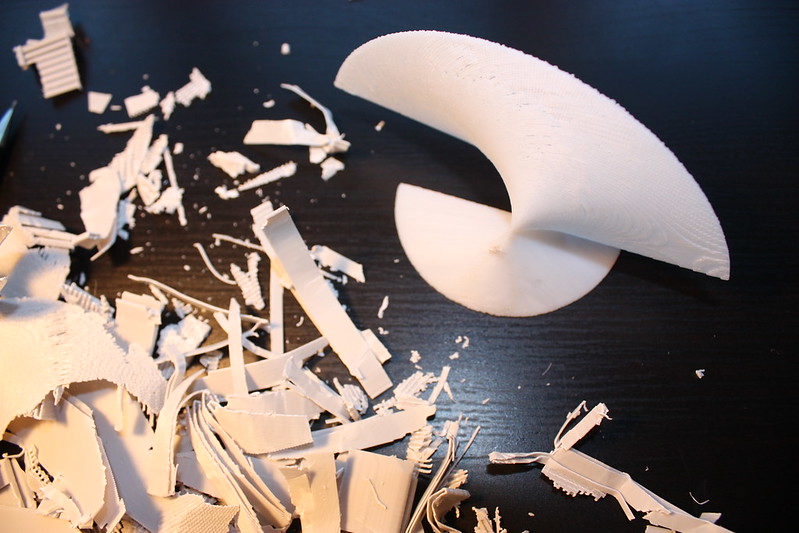
Types of standard support structures
Support structures have two standard shapes when it comes to 3D printing.
- Tree-like support structures, as the name suggests, are tree shaped support structures designed to only provide support at a specific point. Tree-like supports are both easier to remove and tend to use less material. However, as the support provided is so localized, they are only best suited to be used with overhangs.
- Linear/accordion support structures are much more coherently shaped and act as “pillars” upon which either overhangs or bridges can be printed. A variant of linear support structures is the grid support structure, which basically provides a mesh-like design to provide comprehensive interconnected support for complex shapes.
Are support structures necessary?
No matter which way we look at it…in ideal circumstances, we would all love to avoid support materials altogether. They add extra cost by way of wasted material, as well as time. This is true both during printing and during post-processing. They also deviate from the conceptual ethos of additive manufacturing, the principle underpinning the very existence of 3D printers.
Support materials are not, however, a binding by-product of 3D printing. They are a necessity of complex designs. Sculptors centuries past depended on artistically pleasing support structures that became part of the sculptures and added artistic nuance. Beams, scaffoldings, grids and interlocks had all existed before 3D printers were even conceived.
In ideal circumstances, 3D printers should be utilized with clever designs such as multiple parts and orientationally optimized models to minimize the need of support structures. As was the case during the Italian Renaissance, where supports blended seamlessly with a design. In truth, however, the wonder and intrigue of 3D printing is arguably at its most fervent in printing the seemingly impossible.
We must make do with supports structures when replicating certain object. Support structures with a new design however, can be just a design choice.
Why PLA is the ideal plastic
PLA or PolyLactic Acid is a biodegradable polyester that is conventionally made from renewable sources such as corn or other vegetable-based starches. Without getting into too much of its chemistry, PLA – while categorically not being an engineering plastic – is by far the most popular material to use with 3D printers for a few reasons:
- PLA filament has a lower printing temperature than most other filaments, including ABS, which makes it easier to print and work with.
- While it is most definitely biodegradable, at ambient temperatures and conditions PLA is able to hold its shape and structural integrity well enough to be put to light functional use.
- It is able to produce sharp and developed features on 3D prints, more so than possible with ABS under similar conditions. This makes PLA ideal for Rapid Prototyping.
3D printing is becoming increasingly popular thanks to the ever-falling prices of 3D printers. As more and more beginners order and assemble their first 3D printers, most will have their first experience of 3D printing with PLA material. Likewise, most would expect their 3D printers to print incredible shapes without any hassle whatsoever. Learning when to add supports and when not to waste time with it, will ensure effortless printings that conserves time and resources.



